There are 19 municipalities in the Canton of Uri in Switzerland.
Contents

There are 19 municipalities in the Canton of Uri in Switzerland.

| This article is part of a series on the |
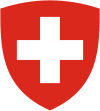 |
|---|
The 19 municipalities of the Canton of Uri were mentioned in the cantonal constitution and any merger had to be approved by a cantonal referendum that would change the constitution accordingly. [1] A referendum in 2013 approved with 57%, the removal of the names of the 19 municipalities from the constitution, thus allowing municipalities' mergers without the need of a cantonal referendum. [2] The municipalities of Seedorf and Bauen were the first that voluntarily decided to merge. [3] The merger took place on 1 January 2021, after approval by the population of both municipalities in a referendum in October 2019; the population of both Seedorf and Bauen voted in favor of the merger with 80% and 69% respectively [4]
| Coat of arms | Flag | Municipality | Population (31 December 2020) [5] | Area in km2 | Inhabitants/ km2 |
|---|---|---|---|---|---|
| | | Altdorf | 9,565 | 10.23 | 935 |
| | | Andermatt | 1,527 | 62.2 | 25 |
| | | Attinghausen | 1,747 | 46.83 | 37 |
| | | Bürglen | 3,930 | 53.14 | 74 |
| | | Erstfeld | 3,861 | 59.2 | 65 |
| | | Flüelen | 2,025 | 12.42 | 163 |
| | | Göschenen | 428 | 10.431 | 41 |
| | | Gurtnellen | 512 | 83.35 | 6 |
| | | Hospental | 182 | 35.0 | 5 |
| | | Isenthal | 476 | 60.99 | 8 |
| | | Realp | 142 | 78.04 | 2 |
| | | Schattdorf | 5,408 | 16.31 | 332 |
| | | Seedorf | 1,876 | 19.42 | 97 |
| | | Seelisberg | 688 | 13.34 | 52 |
| | | Silenen | 1,951 | 144.78 | 13 |
| | | Sisikon | 383 | 16.29 | 24 |
| | | Spiringen | 842 | 64.73 | 13 |
| | | Unterschächen | 695 | 80.33 | 9 |
| | | Wassen | 412 | 96.89 | 4 |

Basel-Landschaft or Basel-Country, informally known as Baselland or Baselbiet, is one of the 26 cantons forming the Swiss Confederation. It is composed of five districts and its capital city is Liestal. It is traditionally considered a "half-canton", the other half being Basel-Stadt, its urban counterpart.
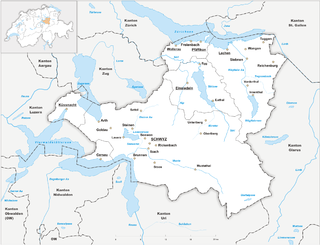
The canton of Schwyz is a canton in central Switzerland between the Alps in the south, Lake Lucerne to the west and Lake Zürich in the north, centred on and named after the town of Schwyz.

Basel-Stadt or Basel-City is one of the 26 cantons forming the Swiss Confederation. It is composed of three municipalities with Basel as the capital. It is traditionally considered a "half-canton", the other half being Basel-Landschaft, its rural counterpart.

The 26 cantons of Switzerland are the member states of the Swiss Confederation. The nucleus of the Swiss Confederacy in the form of the first three confederate allies used to be referred to as the Waldstätte. Two important periods in the development of the Old Swiss Confederacy are summarized by the terms Acht Orte and Dreizehn Orte.

The canton of Uri is one of the 26 cantons of Switzerland and a founding member of the Swiss Confederation. It is located in Central Switzerland. The canton's territory covers the valley of the Reuss between the St. Gotthard Pass and Lake Lucerne.

The canton of Zug or Zoug is one of the 26 cantons of Switzerland. It is located in central Switzerland and its capital is Zug. At 239 km2 (92 sq mi) the canton is one of the smallest of the Swiss cantons in terms of area. It is not subdivided into districts, but eleven municipalities.
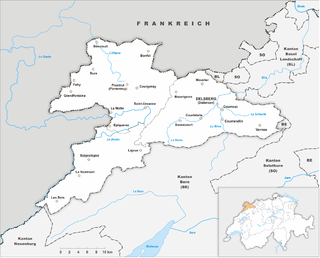
The Republic and Canton of Jura, less formally the Canton of Jura or Canton Jura, is the newest of the 26 Swiss cantons, located in the northwestern part of Switzerland. The capital is Delémont. It shares borders with the canton of Basel-Landschaft, the canton of Bern, the canton of Neuchatel, the canton of Solothurn, and the French régions of Bourgogne-Franche-Comté and Grand Est.

The canton of Fribourg, also canton of Freiburg is located in western Switzerland. The canton is bilingual, with French spoken by more than two thirds of the citizens and German by a little more than a quarter. Both are official languages in the canton. The canton takes its name from its capital city of Fribourg.

The canton of Solothurn or canton of Soleure is a canton of Switzerland. It is located in the northwest of Switzerland. The capital is Solothurn.

Obwalden or Obwald is one of the 26 cantons forming the Swiss Confederation. It is composed of seven municipalities and the seat of the government and parliament is in Sarnen. It is traditionally considered a "half-canton", the other half being Nidwalden.

Nidwalden or Nidwald is one of the 26 cantons forming the Swiss Confederation. It is composed of eleven municipalities and the seat of the government and parliament is in Stans. It is traditionally considered a "half-canton", the other half being Obwalden.
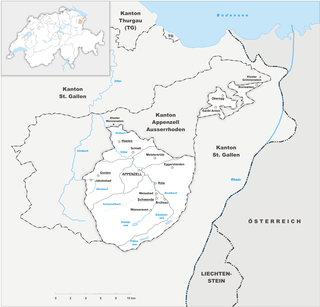
Appenzell Innerrhoden, in English sometimes Appenzell Inner-Rhodes, is one of the 26 cantons forming the Swiss Confederation. It is composed of six districts. The seat of the government and parliament is Appenzell. It is traditionally considered a "half-canton", the other half being Appenzell Ausserrhoden.

Thurgau, anglicized as Thurgovia, and formally as the Canton of Thurgau, is one of the 26 cantons forming the Swiss Confederation. It is composed of five districts. Its capital is Frauenfeld.
Same-sex marriage has been legal in Switzerland since 1 July 2022. Legislation to open marriage to same-sex couples passed the Swiss Parliament in December 2020. The law was challenged in a referendum on 26 September 2021 by opponents of same-sex marriage and was approved with the support of 64% of voters and a majority in all 26 cantons. The law went into force on 1 July 2022. A provision of the law permitting same-sex marriages performed abroad to be recognised in Switzerland took effect on 1 January 2022. Switzerland was the seventeenth country in Europe and the 30th in the world to allow same-sex couples to marry.

Islam in Switzerland has mostly arrived via immigration since the late 20th century. Numbering below 1% of total population in 1980, the fraction of Muslims in the population of permanent residents in Switzerland has quintupled in thirty years, estimated at just above 5% as of 2013. A majority is from Former Yugoslavia ; an additional 20% is from Turkey. This is due to the fact that in the 1960s and 1970s, Switzerland encouraged young men from Yugoslavia and Turkey to come as guest workers. Initially these young men were only planning on staying in Switzerland temporarily, however, revised Swiss immigration laws in the 1970s permitted family regrouping. Consequently, these men ended up staying in Switzerland as these new laws allowed the wives and children of these young men into the country. Since this time period, most of the Muslim immigration to Switzerland stems from asylum seekers arriving primarily from Eastern Europe.

Swiss citizenship is the status of being a citizen of Switzerland and it can be obtained by birth or naturalisation.

Bauen is a former municipality on Lake Lucerne in the Swiss canton of Uri. On 1 January 2021 the former municipality of Bauen merged into the municipality of Seedorf.

Seedorf is a municipality in the Seeland administrative district in the canton of Bern in Switzerland.
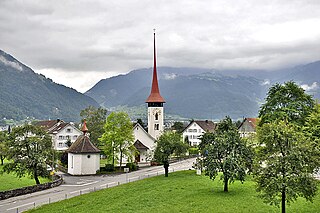
Seedorf is a municipality in the canton of Uri in Switzerland. On 1 January 2021 the former municipality of Bauen merged into the municipality of Seedorf.

Non-citizen suffrage in Switzerland is an ongoing political issue in the country. Switzerland is a federal nation. As such, the cantons have extensive powers to enact their own legislation. For this reason, the rules regarding the rights of non-citizen residents to vote differ considerably throughout Switzerland.